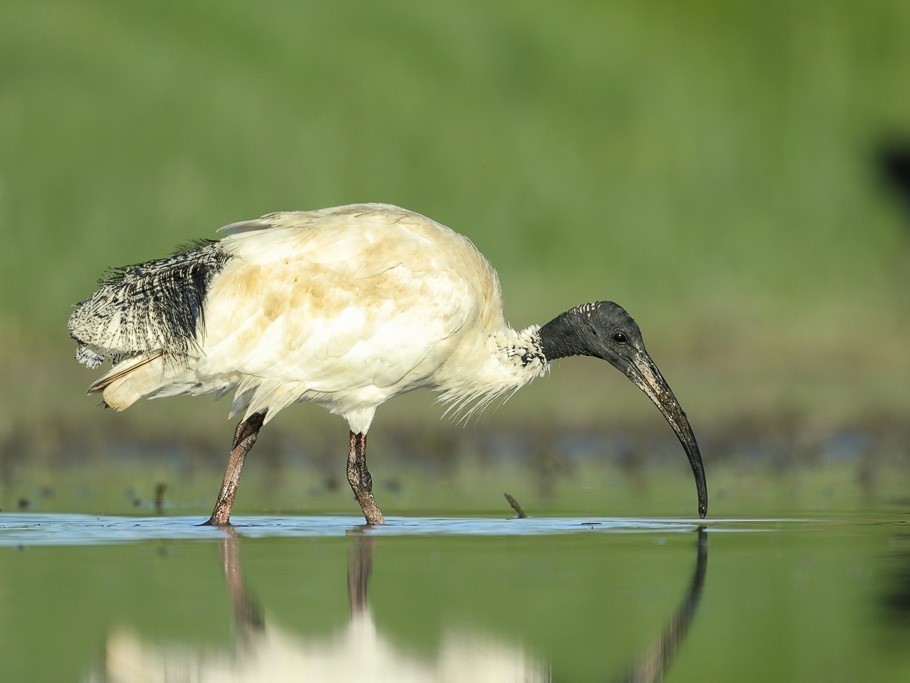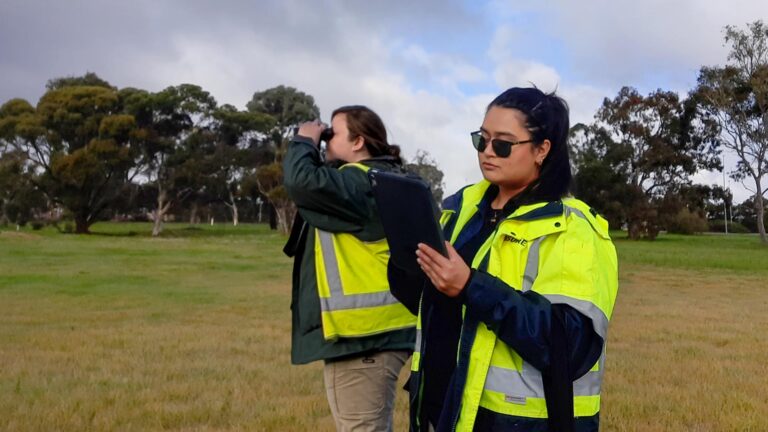Many parts of eastern Australia have experienced some extreme summer weather in the past few months. Avisure is closely monitoring these seasonal conditions, and the impact of the flooding, which has occurred almost the length of the east coast, on wildlife behaviour.
Late in 2023, Cairns received widespread news coverage when Cyclone Jasper dumped 309mm of rain on the city in 24 hours. In March 2022, Ballina Byron Gateway Airport had a similar experience, receiving 811mm of rain, on top of 577mm in February that year.
Team leader and senior wildlife biologist, Alexandra Stone, says in these conditions, it pays to monitor runways and aircraft movement areas closely. ‘Rainfall increases foraging conditions for several species such as gulls, ducks, and ibis. The standing water can create an open buffet.’
‘You need to be vigilant if water ponds for more than 24-hours. It can be very attractive to ducks, and especially if ducks have chicks, they are very hard to move on. When chicks are present, you have to disperse them on foot, and that’s tricky and time-consuming.’
Certain insects, such as mosquitoes, hatch more prolifically after heavy rainfall, attracting aerial insect feeders. ‘The White-throated Needletails and Pacific Swifts catch insects on the wing and spend the majority of their time in the air. They follow storm fronts and can be a great gauge to predict the weather’, Stone says. ‘Although needletails are not especially large (weighing about 110-120g), they gather in flock of 100 plus birds, so a flock in the approach path is a concern.’
Fast facts

White-throated needletails are the fastest bird on the planet in level flight, estimated at 130kph.
Needletails are non-breeding migrants in Australia, arriving from Asia around October annually and departing May to August.
Other areas to consider are aircraft movement surfaces such as runways after floodwaters have receded. ‘Airports have reported worms and other insects deposited on runways as the water receded, causing a feeding frenzy of gull-billed and crested terns at one port for example. In other areas, grub worms (army worms) have appeared in great numbers in nearby farming paddocks after record rainfall.’
Another wildlife hazard management concern after massive flooding events is the stranded carcasses of drowned animals – livestock and native animals – which are a strong attractant for birds of prey such as kites, goshawks, and eagles.

Higher than average rainfall can also extend the breeding seasons of some species. Australian white ibis, whose breeding season normally finishes by the end of January in northern Australia, continued to breed following one season of bumper rainfall. ‘I’m pretty sure they didn’t stop’ that year, Stone says.
The aftermath of heavy rainfall does not always create attractants, it depends on the species. ‘With the amount of rain, we’re seeing water bodies such as quarries, where the water has become incredibly deep. On inspection, we found these sites were very quiet. The deep water deters a lot of species and can wash away vegetation as well. Waders such as egret and ibis like shallower water, so if it’s more than a metre, they may disperse elsewhere. In northern Queensland there may be ponding in the shallower saltwater marshes, so flocks could be gathering there,’ Stone says.




